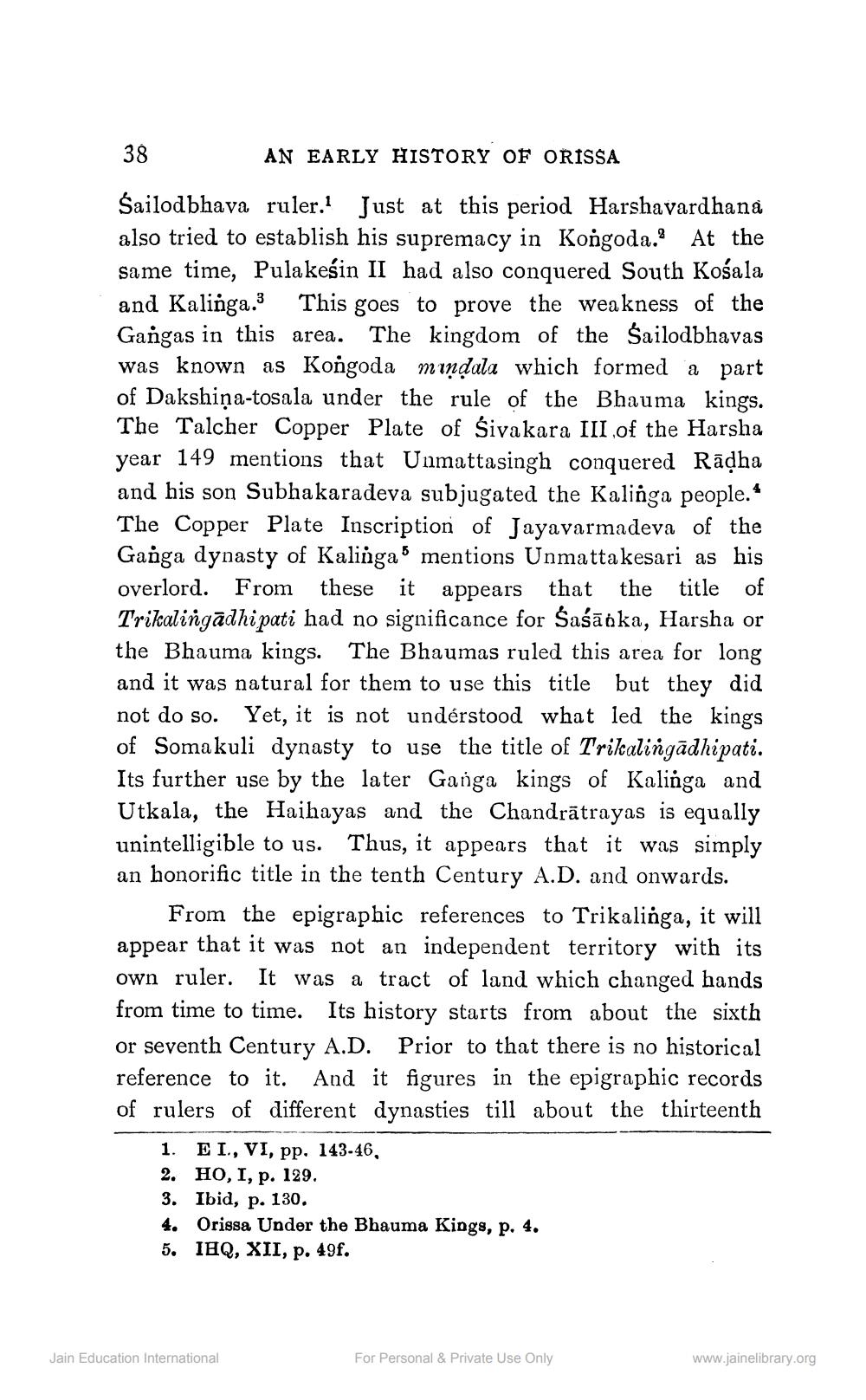________________
38
AN EARLY HISTORY OF ORISSA Śailodbhava ruler. Just at this period Harshavardhana also tried to establish his supremacy in Kongoda. At the same time, Pulakesin II had also conquered South Kośala and Kalinga. This goes to prove the weakness of the Gangas in this area. The kingdom of the Sailodbhavas was known as Kongoda mindala which formed a part of Dakshiņa-tosala under the rule of the Bhauma kings. The Talcher Copper Plate of Sivakara III of the Harsha year 149 mentions that Unmattasingh conquered Rādha and his son Subhakaradeva subjugated the Kalinga people. The Copper Plate Inscription of Jayavarmadeva of the Ganga dynasty of Kalingas mentions Unmatta kesari as his overlord. From these it appears that the title of Trikalingadhi pati had no significance for Śaśānka, Harsha or the Bhauma kings. The Bhaumas ruled this area for long and it was natural for them to use this title but they did not do so. Yet, it is not understood what led the kings of Soma kuli dynasty to use the title of Trikalingādhipati. Its further use by the later Ganga kings of Kalinga and Utkala, the Haihayas and the Chandrātrayas is equally unintelligible to us. Thus, it appears that it was simply an honorific title in the tenth Century A.D. and onwards.
From the epigraphic references to Trikalinga, it will appear that it was not an independent territory with its own ruler. It was a tract of land which changed hands from time to time. Its history starts from about the sixth or seventh Century A.D. Prior to that there is no historical reference to it. And it figures in the epigraphic records of rulers of different dynasties till about the thirteenth
1. EI, VI, pp. 143-46, 2. HO, I, p. 129. 3. Ibid, p. 130. 4. Orissa Under the Bhauma Kings, p. 4. 5. IHQ, XII, p. 49f.
Jain Education International
For Personal & Private Use Only
www.jainelibrary.org




